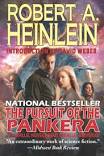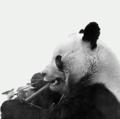A truly special tale
5 stars
Every time I return to Middle Earth, it's like visiting an old friend. The familiar faces, the smells of pipe smoke and trees, the quiet hum of the river – it all washes over me with a sense of peace and belonging. Tolkien's world-building is so immersive that I can almost feel the road going ever on beneath my feet and the cool breeze on my face.
The setting is truly a masterpiece, but it's not just that which draws me back. It's the characters. Frodo, with his quiet courage and unwavering determination; Gandalf, Sam all all the fellowship – these are people I've grown to love. Their journeys, their triumphs, and their struggles feel deeply personal.
Then there's the story itself. With each reread, I discover new nuances, hidden meanings, and deeper connections between the characters and the themes. I mentioned the sense of peace in my first paragraph. …
Every time I return to Middle Earth, it's like visiting an old friend. The familiar faces, the smells of pipe smoke and trees, the quiet hum of the river – it all washes over me with a sense of peace and belonging. Tolkien's world-building is so immersive that I can almost feel the road going ever on beneath my feet and the cool breeze on my face.
The setting is truly a masterpiece, but it's not just that which draws me back. It's the characters. Frodo, with his quiet courage and unwavering determination; Gandalf, Sam all all the fellowship – these are people I've grown to love. Their journeys, their triumphs, and their struggles feel deeply personal.
Then there's the story itself. With each reread, I discover new nuances, hidden meanings, and deeper connections between the characters and the themes. I mentioned the sense of peace in my first paragraph. Of course that is how the story starts - it gets much darker, but that sense of peace is carried in the hearts of the characters as a sense of what is important, it is the reason they struggle against the darkness. This book reminds us what is important in life, in so many ways.
The Fellowship of the Ring is more than just a book; it's a world, a journey, and a friend. It's a place I can always return to and find solace, adventure, and a sense of wonder.




